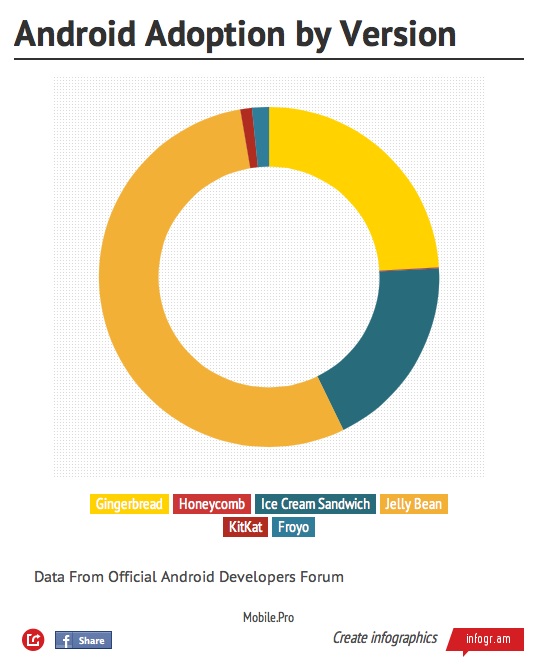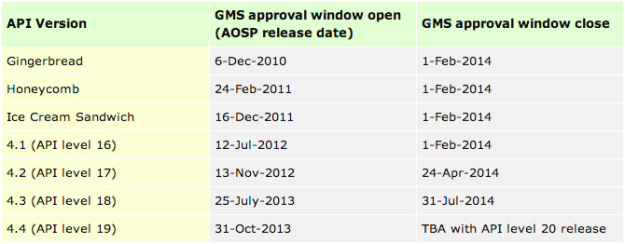Discuss the merits of iOS vs Android (always a civil conversation) and the first thing pointed out is the abysmally slow adoption rate of new Android versions.
It’s true. While iOS 7 sees one of the best adoption rates, Android 4.2 KitKat is on less than 2% of devices, and 2.3 Gingerbread is still on 20% of devices. Many die hard Android users will claim this doesn’t matter because they root and use a custom ROM anyway, but that doesn’t do anything to help Android’s reputation as a fragmented and confused ecosystem.
Apparently Google is not a fan of this epithet and has finally taken steps to change that image, using Google Mobile Services as their bargaining chip.
Google Mobile Services is a large part of what makes Android tick. In the last few years, Google has tightened the standards by which an OEM can get their devices certified. Most of the standards have previously revolved around design and has resulted in many Android based devices that lack Google Services, such as Amazon’s Kindle lineup.
Google’s new standard for GMS certification puts a large emphasis on which Android version is on any given device at the time of launch. After a new version of AOSP is released, there will be a certification window of 9 months. Any devices launched within that window—so long as they are sporting the newest version of Android—will receive GMS approvel.
Additionally, starting later this year, no OEM will be able to certify a new device if it is two or more versions of Android behind the current release.
This might seem harsh in some cases, but Google is allowing its reputation to be built by these manufacturers. If they want to build devices that are outside of Google’s desired specifications they are free to do so, but Google is making it clear now that those devices won’t have native support for Google apps or services.
The new certification policy does not establish standards for future Android updates, only launch versions, but assuming the manufacturers have to pare back their software customizations in order to keep inside the new window, it follows that it will be quicker and easier to keep it up to date for future iterations. The Moto X and other Google Play Edition phones can serve as a testament to that.
Outside of establishing a single hardware manufacturing partnership, it will be hard for Google to challenge Apple on the software penetration front, but this new stance will go a long way towards wrangling in all the loose threads that are Android fragmentation.
Source: BGR, Android Police
Be social! Follow Walyou on Facebook and Twitter
Read more on Walyou, Google Now Launcher Rears its Head, Full Chromecast Support Coming Soon to All Your Devices












